#The Vatican Museums
Text
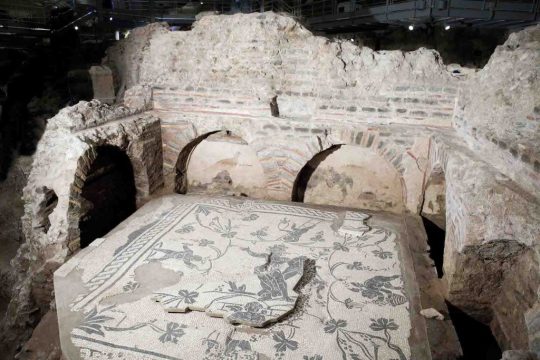
Vatican Museums Opens Ancient Roman Necropolis to the Public
The site was previously only accessible to scholars and specialists.
The Vatican Museums has newly opened to the public an ancient necropolis stocked with carved marble sarcophagi and bone-filled open graves of everyday ancient Romans.
The word necropolis comes from the Greek expression for “city of the dead.” These “cities” grew up alongside roads outside the urban center due to laws forbidding cremation and burial of the dead inside city limits. Funerary practices and rites are preserved especially clearly in the necropolis that extends along the Via Triumphalis (a Roman road now known as the Via Trionfale), with burial sites accompanied by eye-popping Roman frescoes and mosaics.
Previously, the necropolis was accessible only to certain groups of scholars and specialists. It is now open to the public via the new Saint Rose Gate entrance, inaugurated with the exhibition “Life and Death in the Rome of the Caesars.”
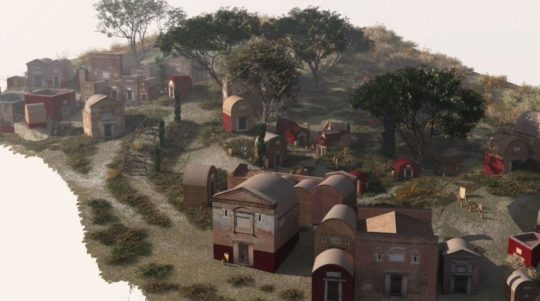
How extensive is the archaeological area?
It extends nearly 11,000 square feet. The size of the necropolis is not as extensive as some other Roman burial sites, but its importance lies in its proximity to one of the most significant religious sites in Christianity.
What is known about particular people who are buried there?
According to archaeologists, no less than the tomb of St. Peter himself is located in the Vatican Necropolis.
But in general, “Here, we have represented the lower middle class of Rome’s population,” said Leonardo Di Blasi, an archaeologist with the Vatican Museums, in a video on Euro News. “They are essentially slaves, freedmen, artisans of the city of Rome.” Some were the property of the emperor, and are indicated to have been the “servant of Nero.”
One of them was a man named Alcimus, who was the set director for the downtown Theater of Pompeii, the most important theater of the period. Another was a horse trainer who worked at the chariot races.
One young boy is interred there, according to the Catholic News Service, marked by a sculpture of a boy’s head accompanied by an inscription reading “Vixit Anni IIII Menses IIII Dies X,” Latin for “He lived four years, four months, and 10 days.”
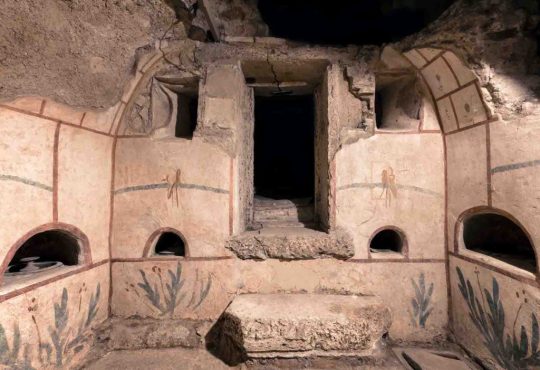
How did this ancient burial ground come to light?
The Vatican burial grounds were first explored in the 1940s at the request of then Pope Pius X, who wanted to be buried near the grave of Peter the Apostle. The dig revealed numerous mausoleums and tombs.
The newest part of the burial ground was revealed through an infrastructure project in 2003, as the Vatican excavated for a new multilevel employee parking garage.
What happened when the Vatican discovered these newest burial grounds?
The department of the Vatican that was overseeing construction of the parking garage, intent on meeting its deadline, was accused of trying to conceal the find, Giandomenico Spinola, an archaeologist and deputy artistic-scientific director of the museums, told the Catholic News Service. It was only when journalists publicized the discovery that he and his colleagues were invited in to advise.
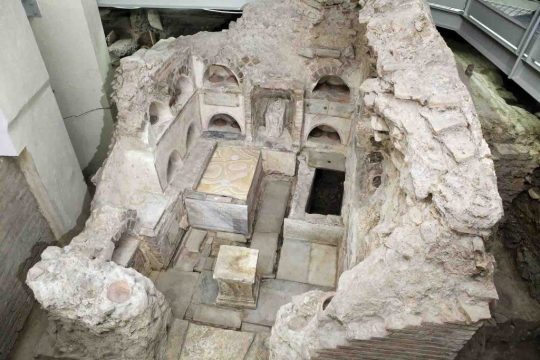

When were the bodies there buried? How have the tombs been so well preserved?
Bodies were interred in this burial ground between the first century B.C.E and the fourth century C.E., and organic remains have vanished. A number of the graves, including their tombs and decorations, including frescoes, mosaic floors, and marble-carved inscriptions, were fortuitously preserved by a series of mudslides in the area.
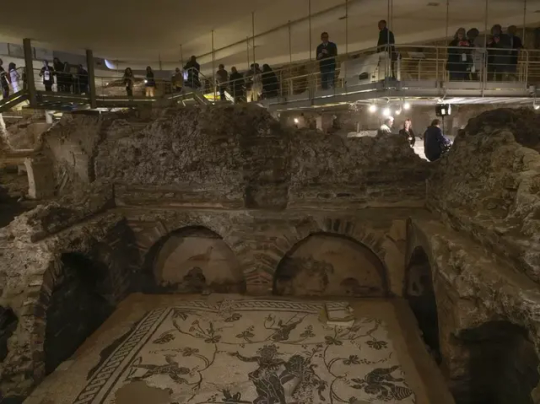
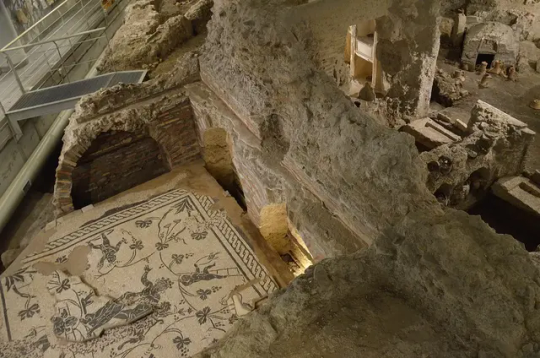
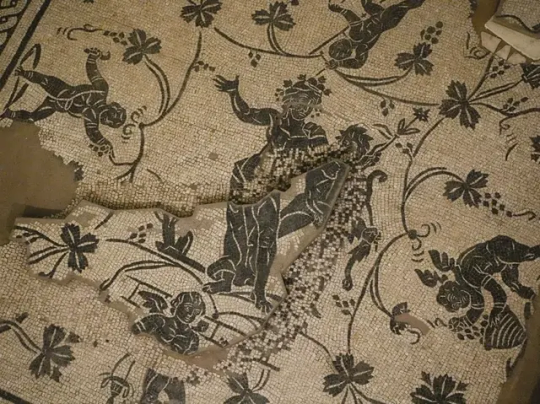
#Vatican Museums Opens Ancient Roman Necropolis to the Public#The Vatican Museums#Ancient Roman 'City for the Dead'#Via Triumphalis necropolis#Life and Death in the Rome of the Caesars#ancient graves#ancient tombs#ancient necropolis#ancient artifacts#archeology#archeolgst#history#history news#ancient history#ancient culture#ancient civilizations#ancient rome#roman history#roman empire#roman art
264 notes
·
View notes
Photo



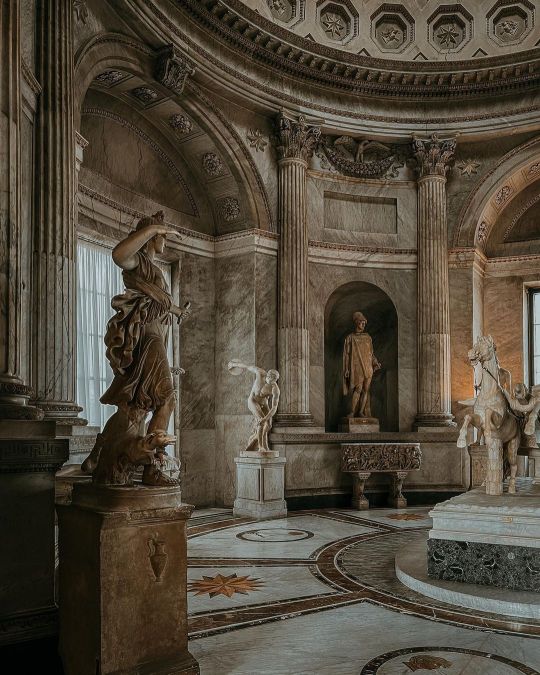
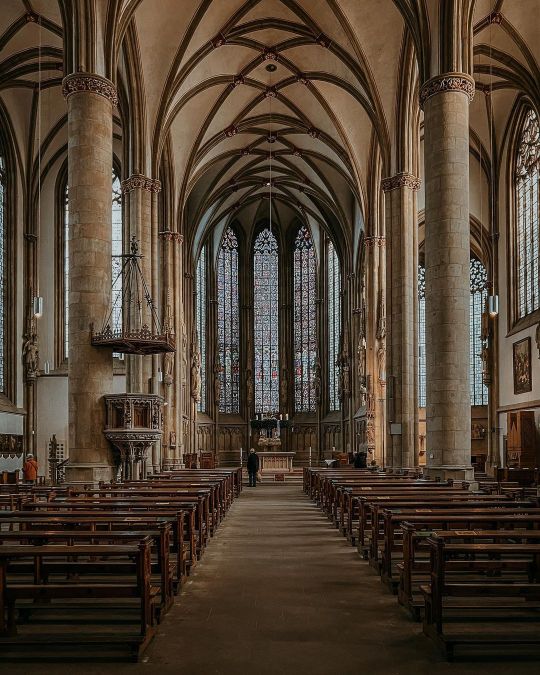
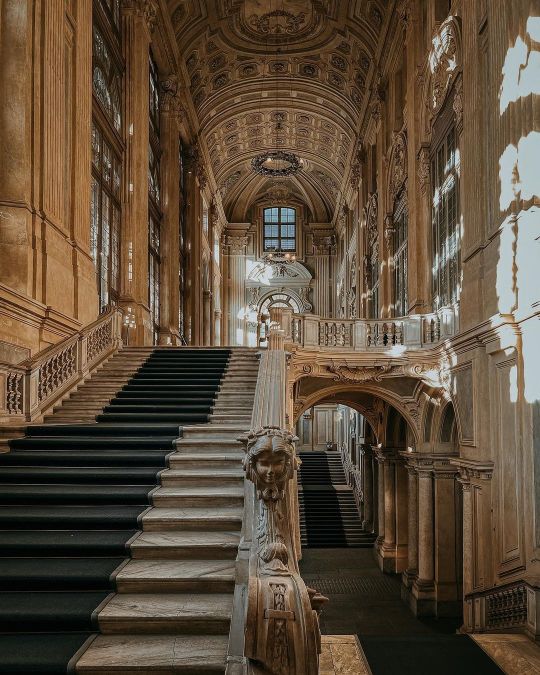
Instagram credit: ichmiles
#vienna#austria#torino#roma#italy#münster#germany#vatican museums#vatican#museum#church#dark academia#dark academia aesthetic#dark academic#architecture#beautiful architecture#sculpture#art#art aesthetic#statue#beige tones#beige aesthetic
4K notes
·
View notes
Text
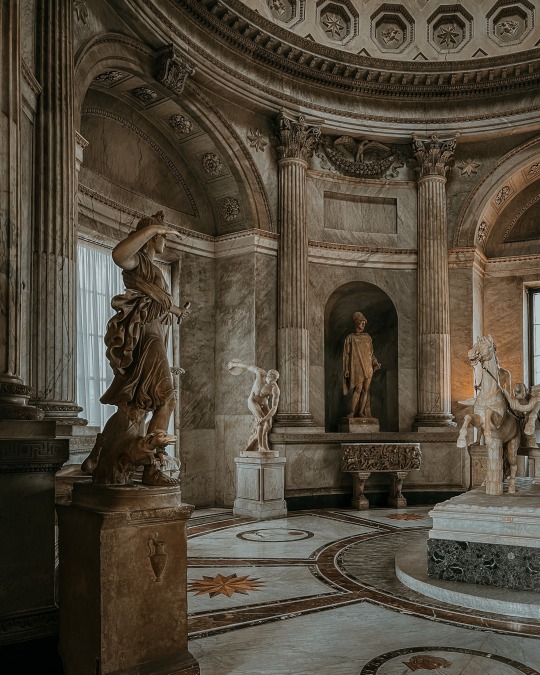
#ancient rome#vatican museums#ancient roman#musei vaticani#musea vaticana#art#history#rome#vatican city#antiquity#ancient#classical#statues#sculptures#marble#architecture#europe#european#roman#discus#italy
2K notes
·
View notes
Text


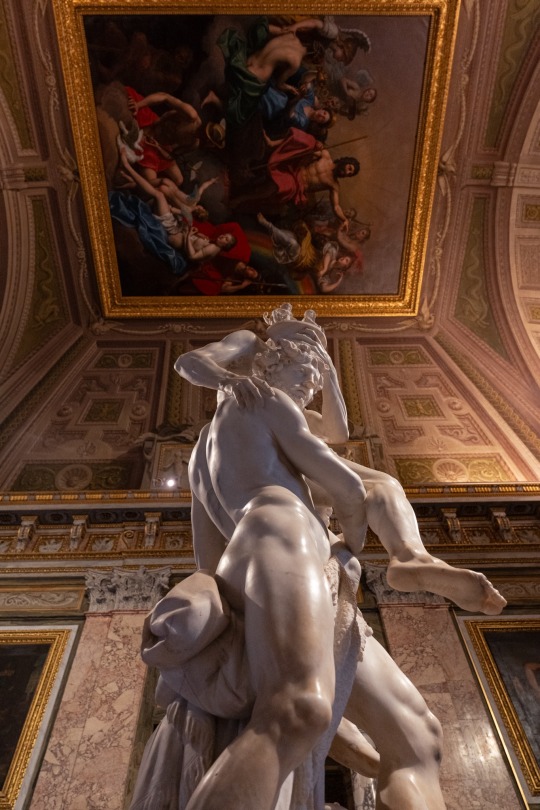
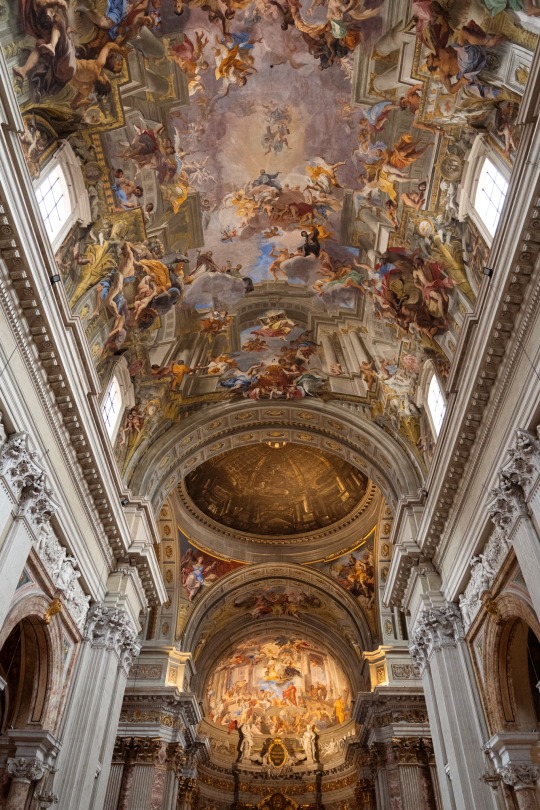
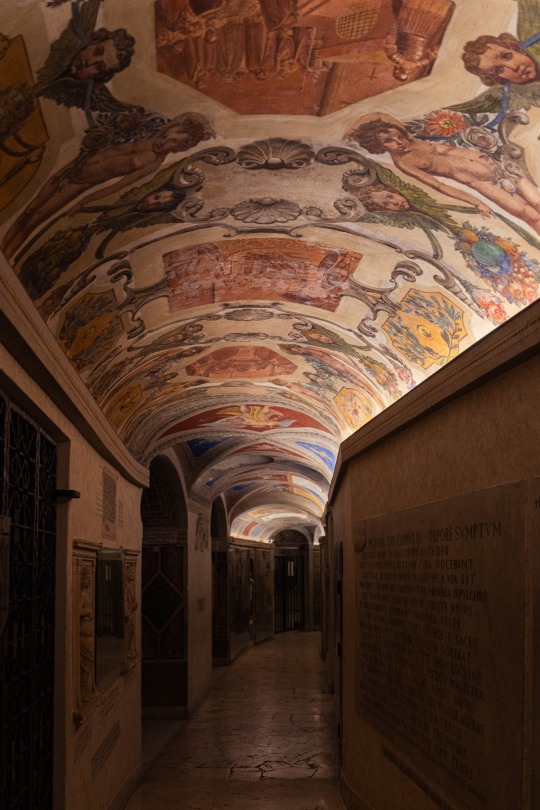



Rome, Italy
Photography by Karina Wieclawska
#rome#italy#roma#vatican#vatican city#art gallery#art museum#vatican museums#baroque#travel photography#travel#karina wieclawska#karina więcławska
250 notes
·
View notes
Text
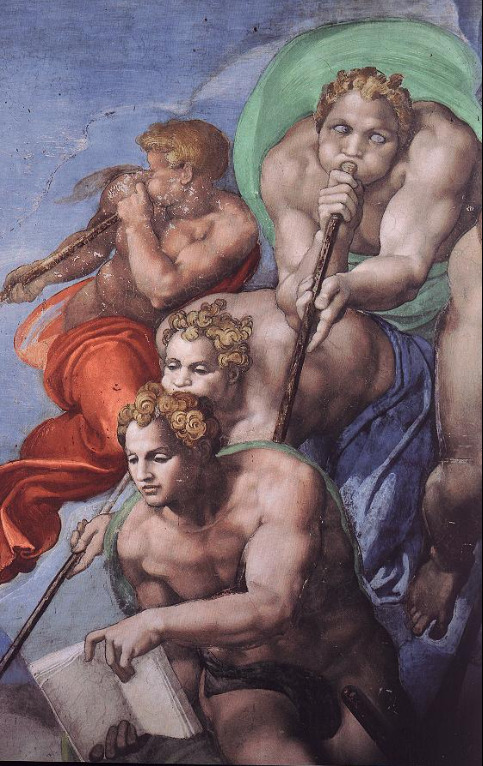
Details from the Last Judgment, Michelangelo Buonarroti, 1536-41
#art history#art#italian art#aesthethic#painting#16th century#the last judgement#michelangelo buonarroti#sistine chapel#vatican museums#rinascimento
67 notes
·
View notes
Text

insta - shayollo
131 notes
·
View notes
Text
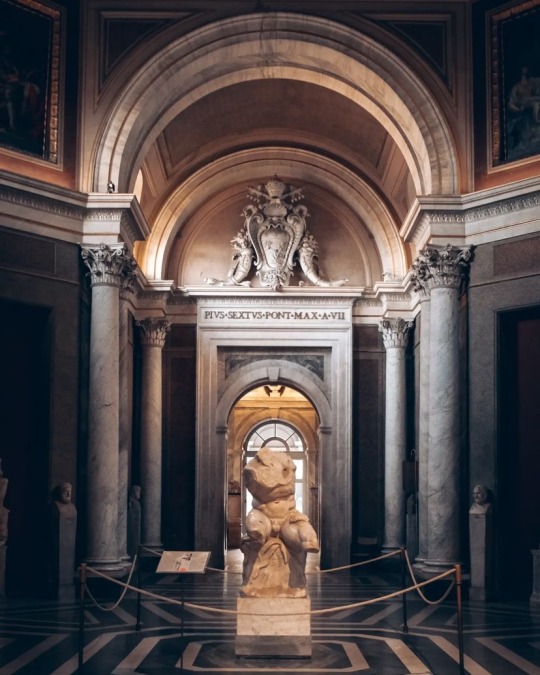

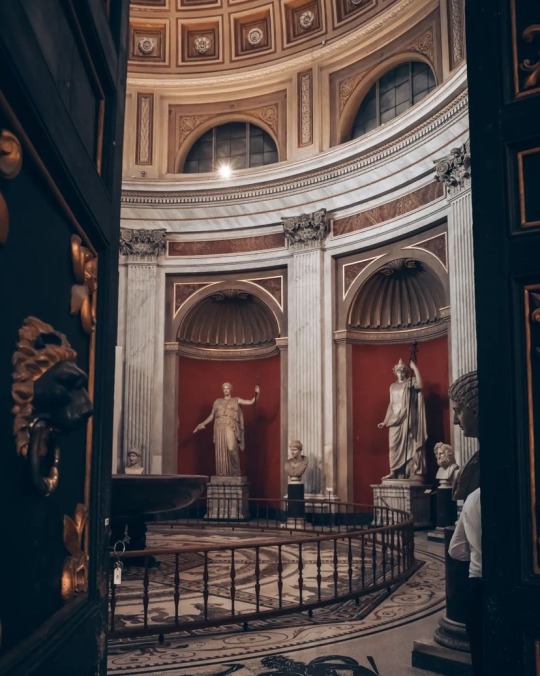


Museos Vaticanos, Roma
401 notes
·
View notes
Text


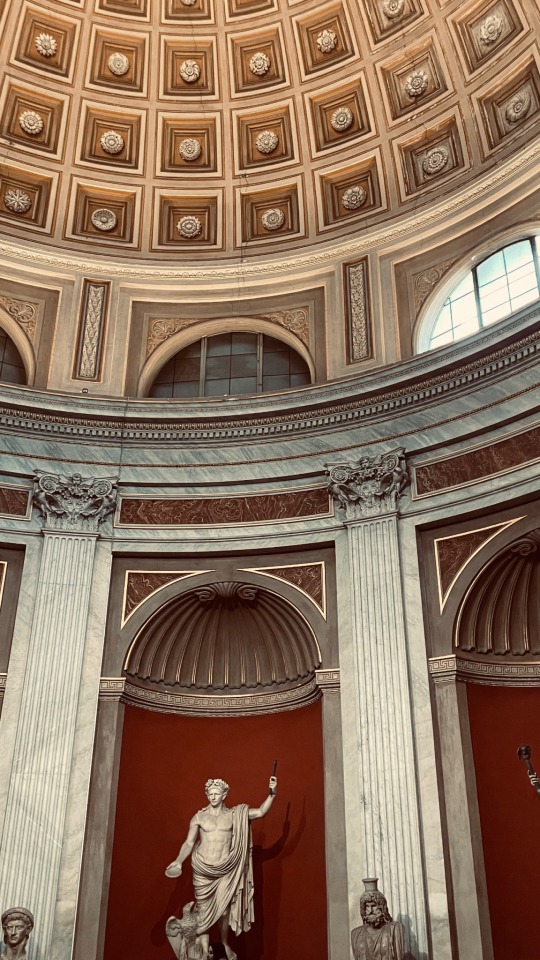


Vatican Museums in Rome, Italy - January 2024
#photography#my pics#rome#travel#art#artwork#vatican#museum#aesthetic#travel blog#arte#places#italy#vatican museums#architecture#landscape#photographers on tumblr#traveling#dark academia
52 notes
·
View notes
Text

Vatican Museums
July 2022
#art#art history#museum#museums#sculpture#ancient greece#ancient rome#rome#greece#italy#vatican#vatican museums#ancient art#ancient history#history#dark academia#academia#classic academia#classics#classic#classical studies#ancient greek#bust#portrait
117 notes
·
View notes
Text
the last holiday I went on (in 2022) I got my period part way through the week and now I'm going away for four days next week and it aligns exactly with my period.... life is a curse existence is a prison etc etc

#throwback to having a breakdown in the middle of the vatican museum because i was roughly 12 hours away from my period 🤪#my only hope is that it's a couple of days later than the usual range but even then that means fighting pms demons the whole time 😭#i can't believe half the population never have to deal with this.....#imagine how freeing it would be to never have to think about these things.....#talking
26 notes
·
View notes
Text

Charles M. Schulz, Linus van Pelt, 1952
VS
Hermes Pio-Clementino | Belvedere Antinous, second century AD (copy of a bronze by Praxiteles)
#Charles M. Schulz#Linus van Pelt#linus#Peanuts#comic#comic strip#comics#Hermes Pio-Clementino#Belvedere Antinous#vatican#Museo Pio-Clementino#musei vaticani#vatican museums#città del vaticano#marble#statue#sculpture#ancient rome#antinous
56 notes
·
View notes
Photo

Vatican Experts Restore Ancient Gilded Hercules Statue Struck by Lightning
Scaffolding in a niche of the Vatican Museums’ Round Hall conceal from view the work of restorers who are removing centuries of grime from the largest known bronze statue of the ancient world: the gilded Hercules Mastai Righetti.

For more than 150 years, the four-meter-tall (13-foot-tall) figure of the half-human Roman god of strength has stood in that niche, barely garnering notice among other antiquities because of the dark coating it had acquired.

But it was only after removing a layer of wax and other material from a 19th-century restoration that Vatican experts understood the statue's true splendor as one of the most significant gilded statues of its time. Museum-goers will be able to see its grandeur for themselves once the restoration is finished, which is expected in December.
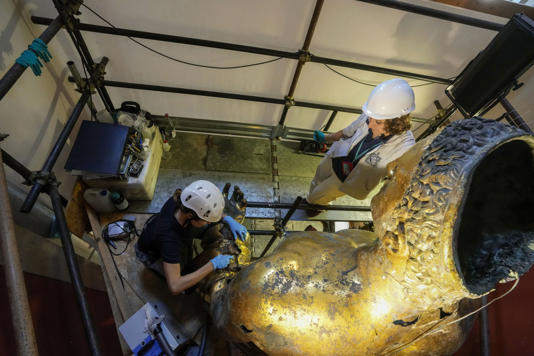
“The original gilding is exceptionally well-preserved, especially for the consistency and homogeneity,” Vatican Museum restorer Alice Baltera said.

The discovery of the colossal bronze statue in 1864 during work on a banker’s villa near Rome's Campo dei Fiori square made global headlines.
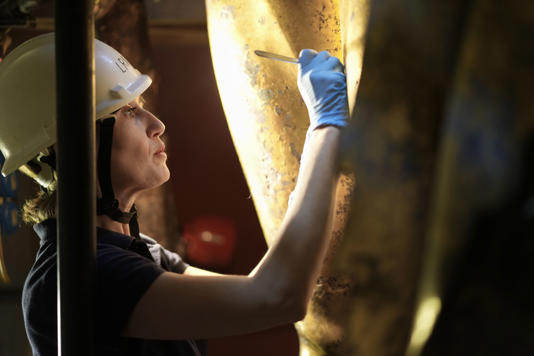
Visitors drawn to the ancient wonder at the time included Pope Pius IX, who later added the work to the papal collection. The statue depicting Hercules after he finished his labors had the last names of the pope — Mastai — and of the banker, Pietro Righetti, added to its title.
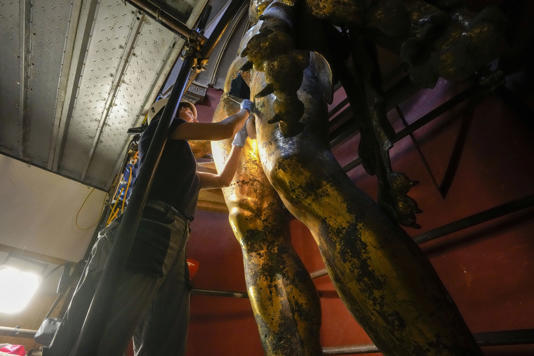
The inscription FCS accompanying the statue on a slab of travertine marble indicates it was struck by lightning, according to Claudia Valeri, curator of the Vatican Museums department of Greek and Roman antiquities. As a result, it was buried in a marble shrine according to Roman rites that saw lightning as an expression of divine forces.

FCS stands for "fulgur conditum summanium, a Latin phrase meaning “Here is buried a Summanian thunderbolt.” Summanus was the ancient Roman god of nocturnal thunder. The ancient Romans believed that not only was any object stricken imbued with divinity, but also the spot where it was hit and buried.

"It is said that sometimes being struck by lightning generates love but also eternity,’’ Vatican Museums archaeologist Giandomenico Spinola said. The Hercules Mastai Righetti “got his eternity … because having been struck by lightning, it was considered a sacred object, which preserved it until about 150 years ago.”
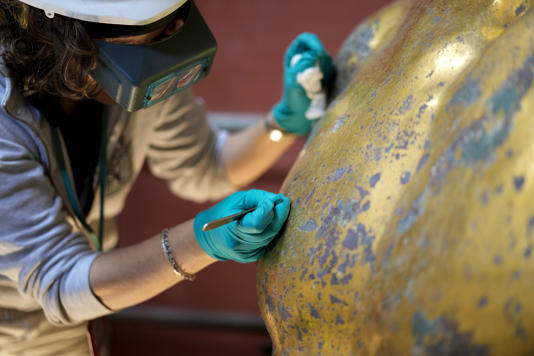
The burial protected the gilding, but also caused dirt to build up on the statue, which Baltera said is very delicate and painstaking to remove. “The only way is to work precisely with special magnifying glasses, removing all the small encrustations one by one,” she said.

The work to remove the wax and other materials that were applied during the 19th-century restoration is complete. Going forward, restorers plan to make fresh casts out of resin to replace the plaster patches that covered missing pieces, including on part of the nape of the neck and the pubis.

The most astonishing finding to emerge during the preliminary phase of the restoration was the skill with which the smelters fused mercury to gold, making the gilded surface more enduring.
“The history of this work is told by its gilding. … It is one of the most compact and solid gildings found to date,’’ said Ulderico Santamaria, a University of Tuscia professor who is head of the Vatican Museums' scientific research laboratory.
By Francesco Sportelli.


#Hercules#Gilded Hercules Mastai Righetti#Vatican Museums’ Round Hall#statue#gilded statue#ancient artifacts#archeology#archeolgst#history#history news#ancient history#ancient culture#ancient civilizations#ancient rome#roman history#roman empire#roman art#long reads#Vatican Experts Restore Ancient Gilded Hercules Statue Struck by Lightning
150 notes
·
View notes
Photo


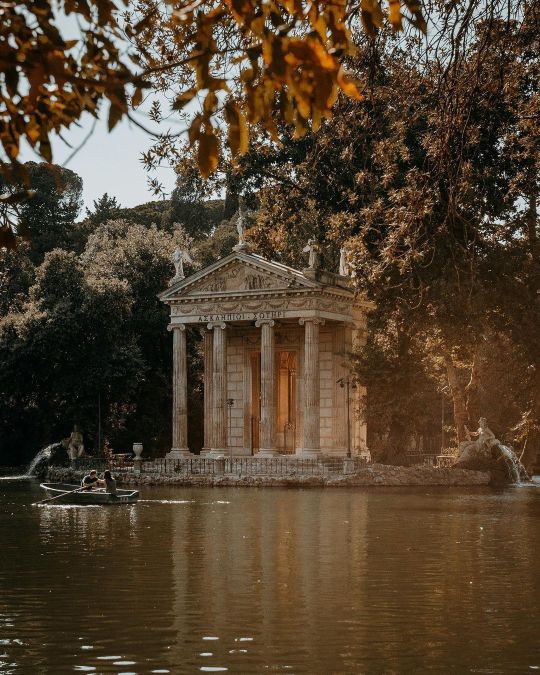
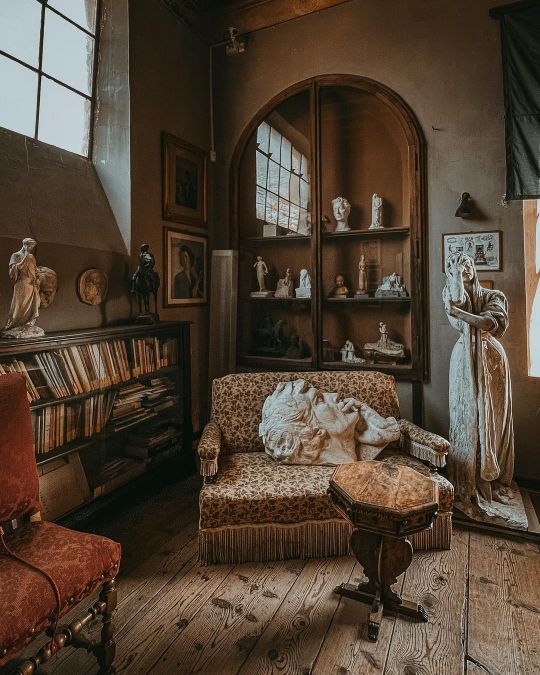
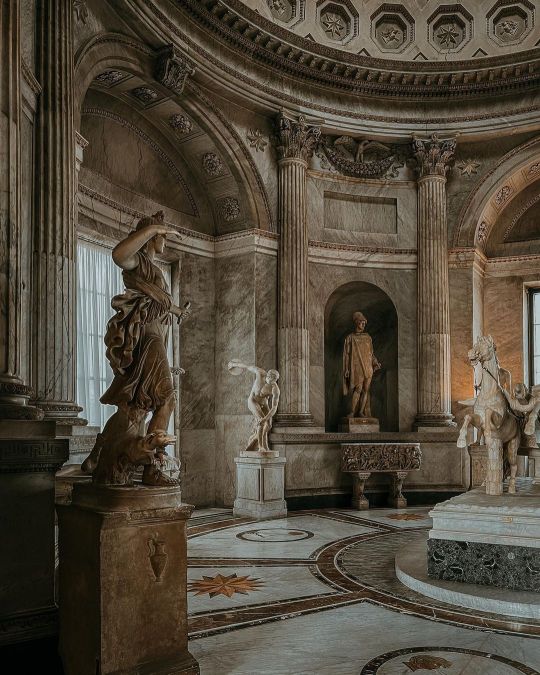
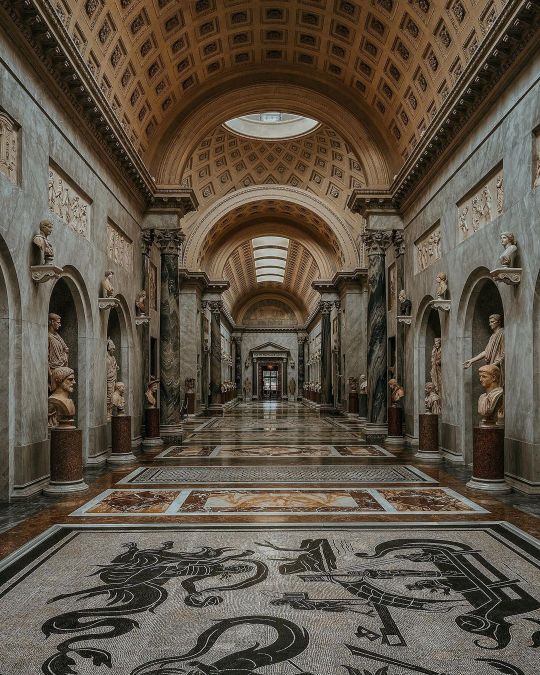
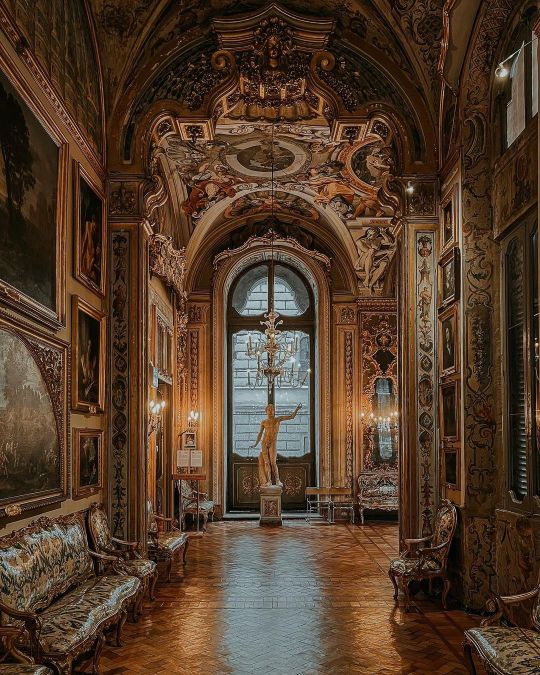
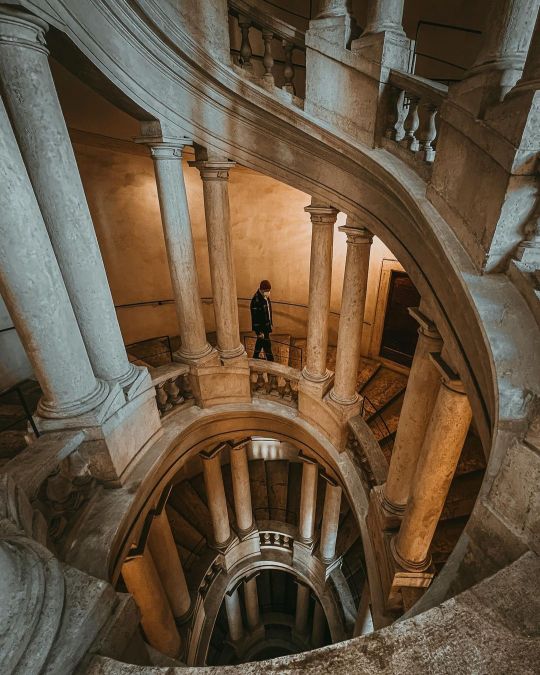
Instagram credit: ichmiles
#roma#italy#vatican#vatican museums#art history#art#sculpture#palazzo barberini#architecture#culture#beautiful places#museums#art museum#statue#beautiful architecture#travel
8K notes
·
View notes
Text
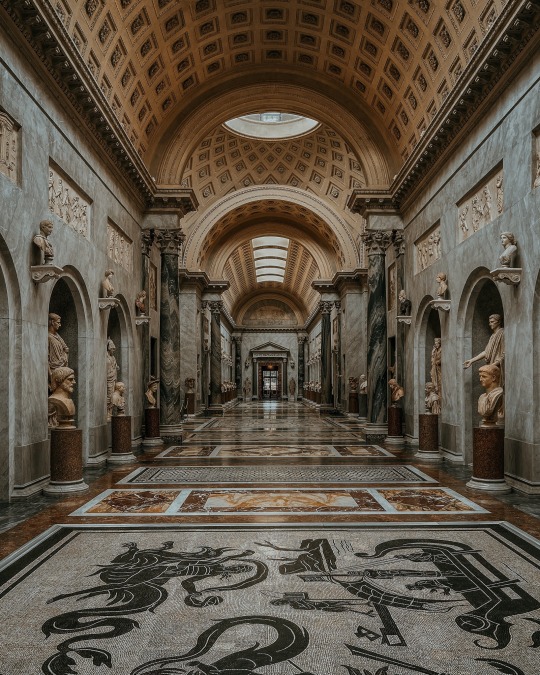
#chiaramonti museum#vatican museums#museums#galleries#gallery#sculptures#vatican palace#vatican#ancient rome#ancient roman#vatican city#art#history#europe#european#italy#statues#marble#architecture#chiaramonti#antiquity#ancient#classical#musea vaticana#musei vaticani
1K notes
·
View notes
Text
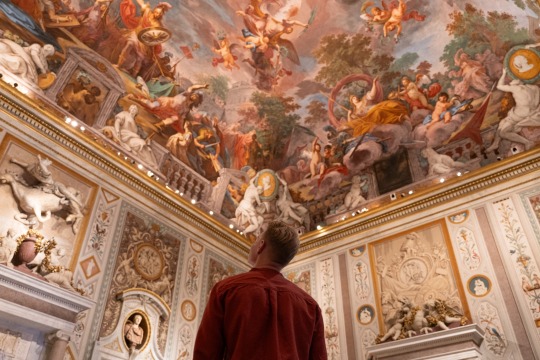


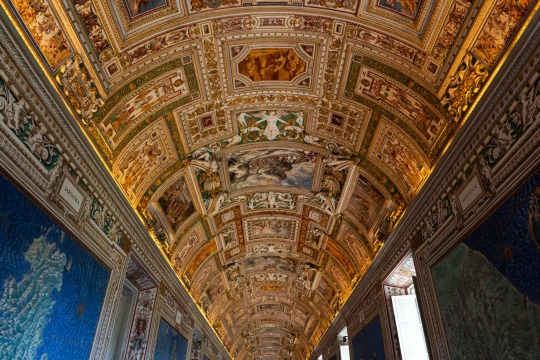



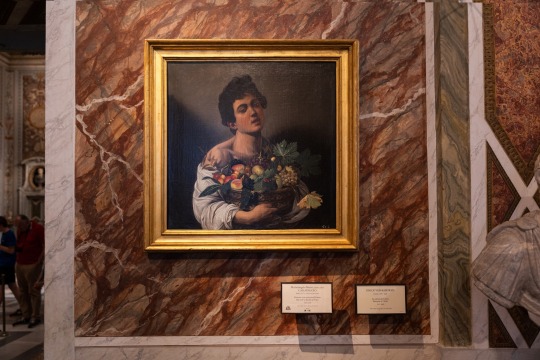

Rome, Italy photographed by Karina Wieclawska
More on silkportaits
#rome#italy#vatican#vatican city#art gallery#art museum#roma#travel photography#art#sculpture#statue#paintings#karina wieclawska#karina więcławska
44 notes
·
View notes
Text
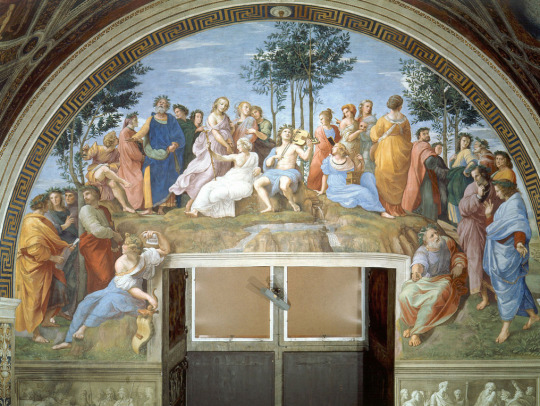


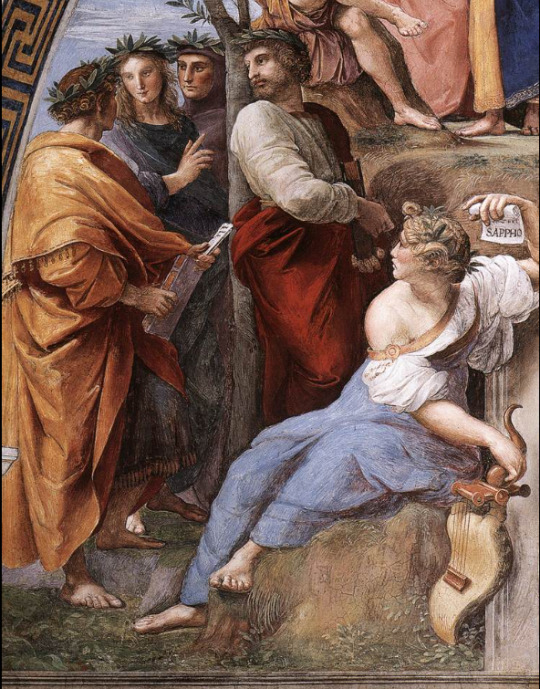
The Parnassus, Raffaello Sanzio, 1509-11
#art history#art#italian art#aesthethic#16th century#greek mythology#ancient greece#parnassus#raphael#raffaello sanzio#poets#vatican museums#musei vaticani#sappho#apollo#virgil#dante alighieri#homer
70 notes
·
View notes